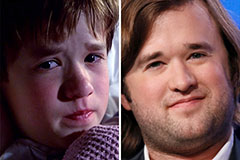Losing your hair can be a heartbreaking experience, impacting not only your appearance but also your belief in yourself. Fortunately, there's now an reliable solution to reverse hair loss: FUT/FUE procedures. This revolutionary technique involves moving healthy hair follicles from a source region to the receding areas on your scalp, restoring your natural hairline and enhancing your overall outlook.
- Uncover the technology behind hair transplantation.
- Understand the various types of methods available.
- Identify the optimal solution for your unique needs.
Opt for a qualified hair transplant practitioner to ensure the safest outcomes. With appropriate care, hair transplantation can provide a permanent solution for hair loss, allowing you to restore your self-esteem and live fully life with a luxuriant head of hair.
Stem Hair Loss in Its Tracks: Proven Treatment Options for Men and Women
Losing your hair can be a depressing experience. But don't lose hope! There are proven treatment options available to restore your locks, whether you're a man or a woman experiencing hair thinning or loss. From natural remedies to surgical procedures, there's a solution tailored to your unique needs.
- Explore treatments that can stimulate hair growth by inhibiting the production of DHT, a hormone linked to hair loss.
- Incorporate topical solutions directly applied to your scalp to nourish hair follicles.
- Discover the benefits of a healthy diet and lifestyle, which can impact hair health by supplying essential nutrients.
- Consult with a dermatologist or trichologist to identify the underlying cause of your hair loss and propose the most effective treatment plan for you.
Remember, making a change is the first step towards reversing your hair's health and well-being.
Hair Restoration : A Comprehensive Look at Procedures and Results
Hair loss can be a distressing experience, impacting both physical appearance and self-esteem. Fortunately, advancements in medical technology have led to a variety of effective procedures for hair restoration. This article provides a comprehensive overview of the most common hair restoration procedures available, outlining their mechanisms, benefits, and potential risks. Sufferers seeking to combat hair loss often explore options such as hair transplantation, medication, or laser therapy.
Hair transplantation involves surgically transferring hair follicles from a donor area, typically the back of the head, to the balding areas. This procedure can yield significant results, but it requires a skilled surgeon and meticulous aftercare. Medications like finasteride and minoxidil can help promote hair growth by inhibiting hormones involved in hair loss. These medications are typically used over the long term to maintain hair density. Laser therapy utilizes low-level lasers to energize hair follicles, promoting regeneration.
While these procedures offer promising results, it's important to consult with a qualified dermatologist or hair restoration specialist to determine the most suitable option based on individual needs and expectations. The choice of treatment will depend on factors such as the extent of hair loss, underlying medical conditions, and personal preferences.
Outcomes can vary depending on the chosen procedure, patient factors, and adherence to post-treatment care instructions. Some individuals may experience noticeable improvements in hair density and thickness within a few months, while others may require multiple sessions or a combination of treatments to achieve desired results. It's crucial to have realistic expectations and understand that hair restoration is an ongoing process that may require long-term maintenance.
Knowledge Behind Hair Transplants: Exploring the Process
A hair transplant is a surgical procedure that involves transplanting hair follicles from one area of more info the scalp to another. This process, often performed by skilled plastic surgeons or dermatologists, aims to restore hair density in areas experiencing thinning or baldness. The science behind this procedure centers on the unique characteristics of hair follicles and their ability to thrive in new locations.
During a hair transplant, healthy hair follicles are carefully harvested from the donor area, typically the back or sides of the scalp. These follicles are then meticulously planted into the recipient area, where they attach with the surrounding tissue and ultimately create new hair growth.
- Various factors can influence the success of a hair transplant, including the donor's hair quality, the recipient's scalp health, and the skill of the surgeon.
- The procedure typically requires several hours and may involve local or general anesthesia.
- After the surgery, patients can expect some swelling and redness, which usually subside within a few days. It takes several months for transplanted hair to grow, and the full results of the procedure may not be visible for up to a year.
Say Goodbye to Thinning Hair: Effective Solutions for Every Stage of Loss
Are you anxious about thinning hair? You're not alone! Hair loss is a common concern that can affect both men and women. The good news is that there are many successful solutions available, regardless of the level of your hair loss.
Mild hair thinning can often be reversed with lifestyle modifications, such as eating a balanced diet and reducing stress. There are also topical treatments that can promote hair growth. For more advanced hair loss, your doctor may recommend prescription medications or even surgical procedures.
It's important to talk to with a dermatologist or hair loss specialist to determine the primary cause of your hair loss and find the best treatment plan for you. With the right approach, you can thicken your hair and improve your confidence.
Unlocking Natural-Looking Hair: The Future of Tresses Restoration Treatments
The realm of hair restoration is experiencing a revolutionary surge, with cutting-edge treatments promising to deliver increasingly realistic results. Gone are the days of apparent grafts that betray a procedure. Advancements in technology and techniques are fading the lines between restored hair and your own natural foliage. This exciting evolution is driven by a focus on finesse, ensuring that the finish seamlessly integrates with your existing look.
A key driver in this transformation is the emergence of minimally invasive techniques. These methods employ sophisticated tools and methods to achieve a seamless blend, minimizing disruption to your scalp and encouraging natural-looking growth.
From stem cell therapy to robotic hair transplantation, the future of hair restoration holds abundant possibilities. These breakthroughs are poised to revolutionize the way we approach hair loss, offering individuals a chance to regain their self-esteem and embrace a vibrant life with the hair they long for.
 Haley Joel Osment Then & Now!
Haley Joel Osment Then & Now! Tony Danza Then & Now!
Tony Danza Then & Now! Soleil Moon Frye Then & Now!
Soleil Moon Frye Then & Now! Nicki Minaj Then & Now!
Nicki Minaj Then & Now! Terry Farrell Then & Now!
Terry Farrell Then & Now!